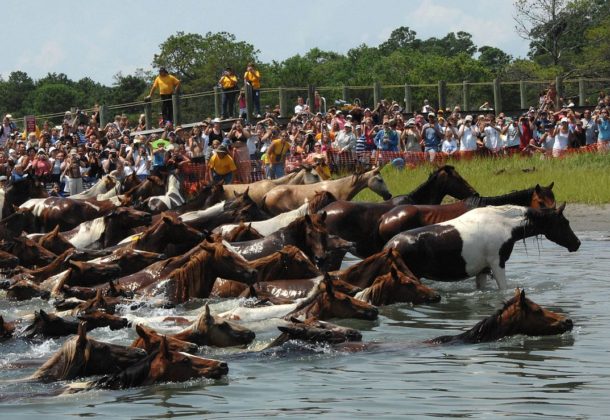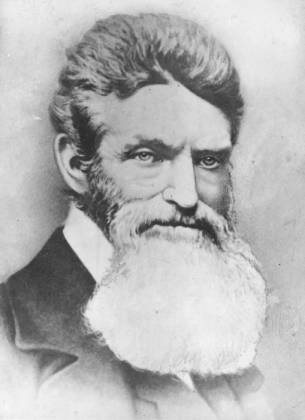Virginia was one of the Thirteen Original Colonies and where some of the earliest colonists settled. It was named for Queen Elizabeth I who was known as the Virgin Queen. The Virginia General Assembly is the oldest continuous law-making body in the New World. Both the American Revolution and the Civil War ended in Virginia.

Jamestown
Virginia was the first successful British colony in America. There had been various other attempts that all failed before that. On May 14, 1607 a group of about 100 men from the Virginia Company settled Jamestown. The first couple of years were hard for the settlers. They faced disease, famine and conflict with Native Americans. Around 90% of the settlers died. The colony was nearly a failure but a new group of settlers arrived in 1610. A new strain of tobacco helped make the colony a success. As well as a period of peace that followed John Rolfe’s marriage to Pocahontas. The Virginia Company began recruiting women to join the colony to marry the men there and start families. In 1624, the Virginia Company’s charter was revoked and it became a royal colony. It remained the capital of Virginia until 1699. Today, what was Jamestown is now located within Williamsburg. You can visit Historic Jamestown as a part of Colonial Williamsburg. It is the largest living history museum in the world.
Pony Swim

The Pony Swim, or Pony Penning, is an annual event in Chincoteague, Virginia. It is when the wild Chincoteague ponies from Assateague Island swim across the Assateague Channel to Chincoteague Island. The Saltwater Cowboys roundup the ponies and drive them towards the channel for the Pony Swim. Once they are on Chincoteague Island they are herded into pens on the fairgrounds where some of the foals will be auctioned off. It is held on the last consecutive Wednesday and Thursday in July. They do this to help control the herd size on Assateague Island. Some believe that the ponies were brought to Assateague Island in the 17th century and others believe that they are the descendants of Spanish horses that swam to the island after a shipwreck in the 16th century. Pony penning started as a way for locals to claim, brand and harness the wild ponies. By the 1700s it was an annual event. The first written description appeared in 1835 and by 1885 the annual event became a festival day. The annual swim began in 1925. The herd is owned and maintained by the Chincoteague Volunteer Fire Company. They are allowed to keep a herd of up to 150 horses.
Smithfield Ham
Virginia is known for its ham and none more so than the Smithfield Ham. Pigs were first brought to Virginia in 1610. They were wild hogs from Bermuda that were left by Spanish sailors in 1515. The Smithfield Ham was created in 1779, when Captain Mallory Todd began shipping hams to the West Indies from Smithfield. It was one of America’s earliest exports. However, it wasn’t until 1870 that cured, smoked hams were made and called Smithfield Ham by P.D. Gwaltney. A Smithfield Ham is a version of a Country Ham and by law must be made in the city of Smithfield, Virginia between the Suffolk and the James River. To make a Smithfield Ham, the ham is cold-smoked over smoke from a fire of oak, hickory and applewood. Then, it is coated in black pepper, and aged for a minimum of 6 months. Some might be aged for up to 2 years. The state of Virginia has also legally defined what makes a ham a Smithfield Ham and it can’t be called that unless it meets the requirements.
Tangier Island
The United States has all sorts of different accents. However, there is one that is particular to the small community of Tangier Island. The dialect to some may sound more like British English than American English but it is mostly its own creation. Tangier Island began being occupied by British colonists in the 17th century. The reason for the unique dialect being preserved is the community being small and isolated. Some believe that the dialect could’ve come from colonists from Cornwall and Devon. However, there isn’t any evidence to support that. While some think of the dialect as being a leftover from the early settlers, it hasn’t been unchanged. Some of the features of a variety of accents from settlers has been preserved though. For example, those who speak the dialect use “backwards talk”, which is like an extreme form of sarcasm.
Anti-Slavery Rebellions

Two of the most well-known anti-slavery rebellions occurred in Virginia. Nat Turner’s Rebellion took place in August 1831. It was a rebellion of enslaved Virginians led by Nat Turner. The rebels killed between 55 and 65 people. The rebellion only lasted a few days and ended on August 23rd at the Belmont Plantation. Nat Turner survived on the run for two months. There was widespread fear and panic in the aftermath of the rebellion. The state executed 56 people involved and a further 120 enslaved people and free blacks were killed by mobs and militias, most of whom had nothing to do with the rebellion. The other anti-slavery rebellion was when abolitionist John Brown raided Harper’s Ferry in 1859. John Brown believed violence was the only way to end slavery. He led others against slavery during Bleeding Kansas, which was to prevent Kansas from becoming a slave state. He then led a raid on the federal armory at Harper’s Ferry intending to start a slave liberation movement and arm slaves with weapons from the armory. Very few slaves ended up joining him and within 36 hours his men were either captured, killed or fled. John Brown was hanged on December 2, 1859, and became the first person executed for treason in the United States.
